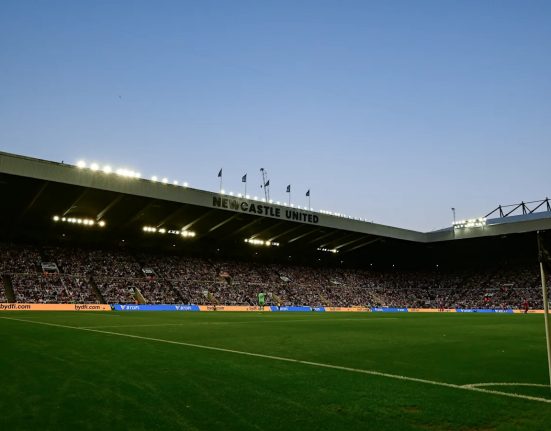Editorial Note: We earn a commission from partner links on Forbes Advisor. Commissions do not affect our editors’ opinions or evaluations.
The rate on a 30-year fixed refinance fell to 6.58% today, according to the Mortgage Research Center. The average rate on a 15-year mortgage refinance is 5.48%. On a 20-year mortgage refinance, the average rate is 6.32%.
Related: Compare Current Refinance Rates
30-Year Fixed-Rate Mortgage Refinance Rates Drop 3.02%
Currently, the average rate for a 30-year, fixed-rate mortgage refinance is 6.58%, down 3.02% from this time last week. Borrowers with a 30-year, fixed-rate mortgage of $100,000 will pay $637 per month for principal and interest at the current interest rate, according to the Forbes Advisor mortgage calculator, not including taxes and fees. Over the life of the loan, the borrower will pay total interest costs of about $130,060.
Another way of looking at loan costs is the annual percentage rate, or APR. For a 30-year, fixed-rate mortgage, the APR is 6.61%, lower than last week’s 6.81%. The APR is essentially the all-in cost of the home loan.
20-Year Fixed-Rate Mortgage Refinance Rates Drop 4.75%
The 20-year fixed mortgage refinance average rate stands at 6.32%, versus 6.64% last week.
The APR, or annual percentage rate, on a 20-year fixed mortgage is 6.36%. It was 6.68% last week.
At the current interest rate, a 20-year, fixed-rate mortgage refinance of $100,000 would cost $735 per month in principal and interest. That doesn’t include taxes and fees. That borrower would pay roughly $76,979 in total interest over the life of the loan.
15-Year Fixed-Rate Mortgage Refinance Rates Drop 3.68%
The 15-year fixed mortgage refinance is currently averaging about 5.48%, compared to 5.68% last week.
The APR, or annual percentage rate, on a 15-year fixed mortgage stands at 5.52%.
At the current interest rate, a borrower using a 15-year, fixed-rate mortgage refinance of $100,000 would pay $816 per month in principal and interest. That doesn’t include taxes and fees. That borrower would pay roughly $47,285 in total interest over the 15-year life of the loan.
30-Year Jumbo Mortgage Refinance Rates Drop 1.26%
The average interest rate for a 30-year, fixed-rate jumbo mortgage refinance (a loan above the federal conforming loan limit of $806,500 in most places) declined week-over-week to 6.9%, versus 6.98% last week.
At today’s interest rate on a 30-year, fixed-rate jumbo mortgage refinance, a borrower would pay $658 per month in principal and interest on a $100,000 loan.
15-Year Jumbo Mortgage Refinance Rates Drop 2.42%
A 15-year, fixed-rate jumbo mortgage refinance has an average interest rate of 5.97%, down 2.42% from last week.
At today’s rate, a borrower would pay $842 per month in principal and interest per $100,000 borrowed for a 15-year, fixed-rate jumbo refi. Over the life of the loan, that borrower would pay around $51,816 in total interest.
Are Refinance Rates and Mortgage Rates the Same?
Refinance rates are different from mortgage rates and tend to be slightly higher. The rate difference can vary by program and is something to consider as you compare the best mortgage refinance lenders.
In addition to having different refinance rates for conventional, FHA, VA and jumbo applications, cash-out refinance rates are higher as you’re borrowing from your available equity.
Rates for government-backed loan programs such as FHA and VA mortgage refinances can be lower than a conventional or jumbo refinance, as there is less risk for lenders. Still, you should compare your estimated loan’s annual percentage rate (APR), which includes all additional fees and determines the interest charges.
When considering a mortgage refinance, compare your current interest rate, mortgage balance and loan term with the new interest rate and term. This comparison helps you estimate your new monthly payment and savings, making it easier to determine if refinancing is the right choice.
When Refinancing Makes Sense
Refinancing your mortgage can be a wise move for many reasons, most notably lowering your interest rate or your monthly payments. It can also help you pay down your mortgage sooner, access your home’s equity or get rid of private mortgage insurance (PMI).
But there are closing costs associated with refinancing, so it probably makes more sense to refinance if you know you’ll be keeping your home for some time. You can determine the “break-even point” for a potential refinance, or how long it will take for savings from a new mortgage to surpass any closing costs. Find out what those costs will be and divide them by the monthly savings you’ll realize with the new mortgage.
The Forbes Advisor mortgage refinance calculator can help you run the numbers to see if it’s a good time for you to refinance.
How To Get Today’s Best Refinance Rates
Much like when you shopped for a mortgage when purchasing your home, when you refinance here’s how you can find the lowest refinance rate:
- Maintain a good credit score
- Consider a shorter-term loan
- Lower your debt-to-income ratio
- Monitor mortgage rates
A solid credit score isn’t a guarantee that you’ll get your refinance approved or score the lowest rate, but it could make your path easier. Mortgage refinance lenders are also more likely to approve you if you don’t have excessive monthly debt. You also should keep an eye on mortgage rates for various loan terms. They fluctuate frequently, and loans that need to be paid off sooner tend to charge lower interest rates.
Trends in Refinance Rates for 2025
National average mortgage rates have remained in the middle-to-high 6% range since the final quarter of 2024, and experts expect this trend to continue throughout the first half of 2025.
Although forecasting mortgage interest rates is challenging, economic indicators like inflation and unemployment rates can provide insights into the direction of the housing market. For example, if inflation slows and national unemployment levels remain stable or rise, the Federal Reserve may cut the federal funds rate, which could lead to lower mortgage rates. On the other hand, if inflation stays high and unemployment decreases, rates are likely to remain steady.
Since mortgage rates are expected to experience minimal movement in the first half of the year, those looking to refinance at a lower rate should consider waiting until later in the year. In the meantime, improving your credit score and making on-time payments will allow you to secure the best possible rate when you begin shopping for refinance offers.
Frequently Asked Questions (FAQs)
How much does it cost to refinance a mortgage?
It can cost as much as 2% to 6% of the full cost of the loan to refinance a mortgage. Make sure to find out the exact closing costs from your lender.
How soon can you refinance a mortgage?
In many cases, you can refinance a mortgage as soon as six months after you start paying it down, although some lenders insist that you wait 12 months. You should ask your lender to be sure.
How do you find the best refinancing lender?
You should always shop around when you’re trying to get a new mortgage or refinance an existing one. Take a look at the best mortgage refinance lenders as a starting point and try applying online. Always find out the closing costs each lender will charge, and make sure you’re able to communicate well with the lender you want to choose. In a bumpy housing market, you’ll probably be in touch with the lender more often than you realize.







